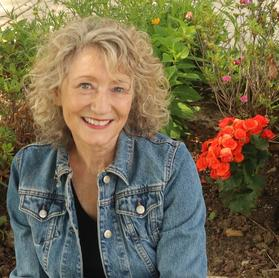THE TOTAL NINJA EXPERIENCE
REVISION RETREAT &
Children’s Writing Workshop
May 9–11, 2025
Hiawatha, IA
Let us help you take your writing to the next level with an intensive workshop. You will be working on manuscripts with award-winning authors who are dedicated to helping writers elevate their craft.
This workshop is designed for writers with manuscripts that need critiquing, revisions, editorial help, and guidance. Writers will work with the Ninjas throughout the workshop. The ratio of faculty to critique groups is six to one or better.
The number of participants is limited to maximize learning and provide an intimate feel. Every moment of the weekend is filled with scheduled critique groups, brainstorming, impromptu discussions of craft, and time to revise.
The Ninjas are a group of
authors who first met at a retreat in Austin, TX. We became fast friends and
realized we have a passion for writing that we want to share with you. Together,
we are the authors of over 300 books. We have also created NF FEST, a
month-long online celebration for children's writers, and the NF Fest Facebook
Group.
FACULTY
Lisa Amstutz is a literary agent and the author of more than 150 children's books, including Mammal Mania, Plants Fight Back, Applesauce Day, Finding a Dove for Gramps, and Amazing Amphibians. She specializes in topics related to science and sustainability. Lisa's background includes a B.A. in Biology and an M.S. in Ecology/Environmental Science.
Stephanie
Bearce
is the award-winning author of 37 books for children including The
Secret of Moonrise Manor, and Mary Anning and Paleontology for
Kids. She frequently presents at writing and education conferences and
co-hosts the Way-Word Writers Podcast with Storm Literary
Agent Heather Cashman and author Nicki Jacobsmeyer. Stephanie is a certified
life/author coach and a serious science and history nerd. You can learn more
about her at www.stephaniebearce.com.
Nancy Churnin is the author of more than 20 children's books, including Dear Mr. Dickens, The William Hoy Story and Manjhi Moves a Mountain, that inspire kids to make a positive difference and encourage kids to be heroes. Her books have won multiple awards and have earned numerous starred reviews. Visit Nancy at https://www.nancychurnin.com to find resources, teacher guides, and projects.
Susie Kralovansky loves writing things teachers can use in the classroom. Her first book, There Was a Tall Texan, was written for her first graders. Since then, she has written both fiction and nonfiction books. The Book That Jake Borrowed - El libro que Jake tomo prestado is Susie’s 19th picture book, her fifth to illustrate, and an award winner for the 2021 International Latino Book Awards. Learn more at www.susankralovansky.com.
Christine Liu-Perkins is the author of The Quest for a Tangram Dragon, an informational fiction picture book. Her middle-grade nonfiction book, At Home in Her Tomb: Lady Dai and the Ancient Chinese Treasures of Mawangdui, earned starred reviews and appeared on multiple “best books of the year” lists. Her favorite part of writing is doing the research! Visit her website www.ChristineLiuPerkins.com
Linda Skeers loves searching for amazing people and fascinating tidbits in history for her nonfiction projects and writing a line that makes her snort out loud for her fiction projects. Her most recent books are Even Better Than Sprinkles, Dinosaur Lady and Women Who Dared--with the sequel coming out in 2025. She's co-taught the Whispering Woods PB Writing Workshop for 20+ years and loves to mentor other writers on their publishing journey.
Peggy Thomas is the author of 30 award-winning books including The Soil in Jackie’s Garden, a Moonbeam medalist, and A Family of Trees: My First Book of Forests. She is also the co-author of Anatomy of Nonfiction, a writer’s guide to crafting children’s nonfiction. Learn more at www.peggythomaswrites.com.
LOCATION:
Prairiewoods
120 East Boysen Road
Hiawatha, IA 52233-1277
(319) 395-6700
PRICING
• Option 1 – A shared room for $350 per person. Come with your writing buddy or make a new best friend!
• Option 2 – A private room for $550 per person.
• Option 3 – Stay off site. Meals and programming only for $275.
▪ Comfort Inn & Suites
▪
Days Inn & Suites by Wyndham
▪ Hampton Inn & Suites
▪ Hilton Garden Inn
Check-in
at 3:00 PM, Friday.
AIRPORT:
Eastern Iowa Airport (CID) about 20 minutes from Prairiewoods
***Register
early. Space is limited!***
Total Ninja Experience Revision Retreat
Children’s Writing
Workshop
To register for The Total Ninja Experience Revision Retreat, May 9-11, 2025:
1. * Complete
the registration form below and mail it, along with a (nonrefundable) $75
deposit (Check, please, made out to Linda Skeers)
2. * Please email Linda to receive
her snail mail address: skeerswriter@gmail.com
Your
registration form and deposit reserve your spot at the retreat. The remainder
of your registration fee must be paid by April 4. Check or money
order, please, also sent to Linda at the above address. If your balance has not
been received by that date, your spot will be given to the next person on the
waiting list.
3. Your
registration will be confirmed via e-mail upon receipt.
4. An
information packet will be emailed to registrants one month prior to the
retreat.
Name:
__________________________________________________________________
Address: _________________________________________________________________
City ____________________________________ State ___________Zip____________
E-mail address _____________________________________Phone_____________________
______Option 1 – A
shared room for $350 per person.
(If you're staying
with a friend, put that person's name here____________________________)
______Option 2 - A private room for $550
per person.
______Option 3 –
Stay offsite. Meals and programming only for $275.
$ ________
TOTAL
Questions? Contact
Linda at skeerswriter@gmail.com
or Susie at susankralovansky@gmail.com.
We look forward to
seeing you soon!
The Ninjas
Congratulations
to our Scholarship Winners!
Gayleen Rabakukk
and
Laura Perdew






















